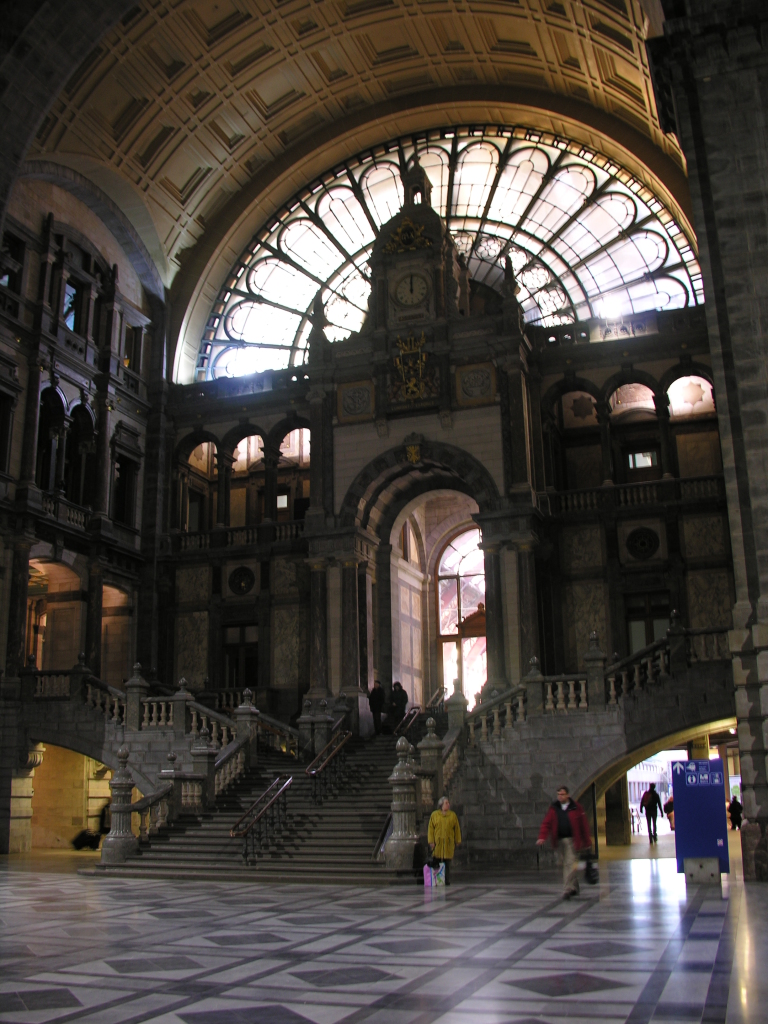
The railway station, like many other public buildings in Antwerp, would be amazing in isolation, and is utterly OTT against the background of all the other architecture. The main hall, on the ground floor, is quite Italianate:

The buffet is an odd mixture of the French leaning ormolu – the station seems to date from 1906 – and the starkly minimalist modern bar.
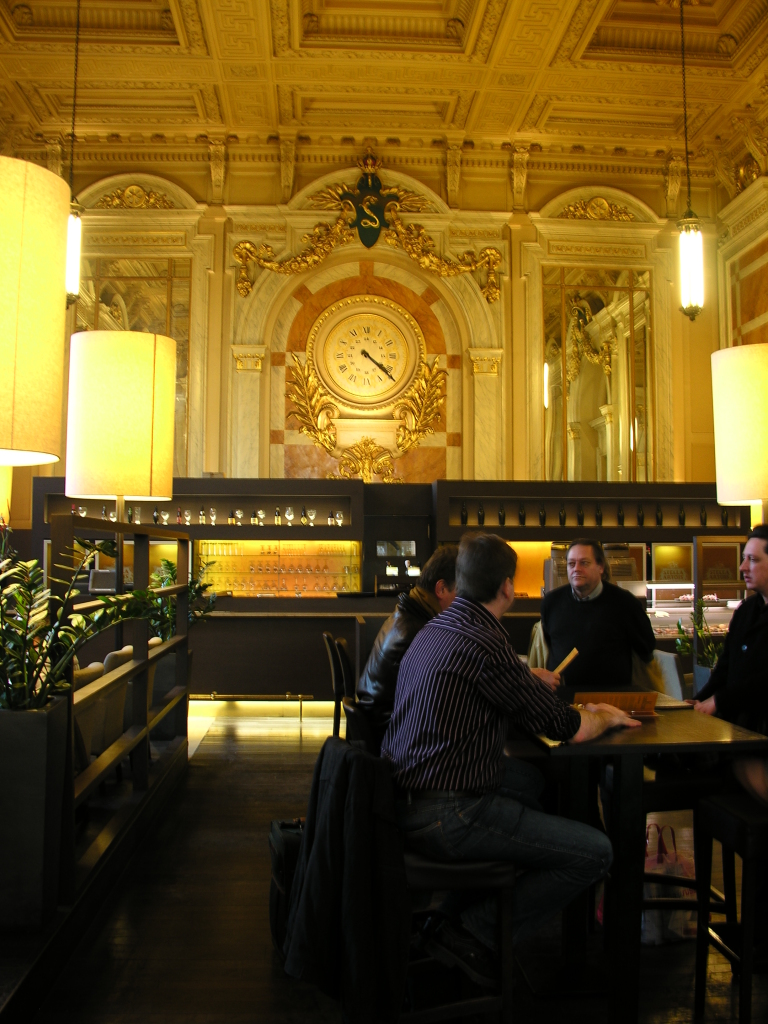
And the station has expanded downwards, first to accommodate Antwerp's underground and suburban rail lines, and latterly to allow international trains from Amsterdam to Paris to pass through the station without turning around.
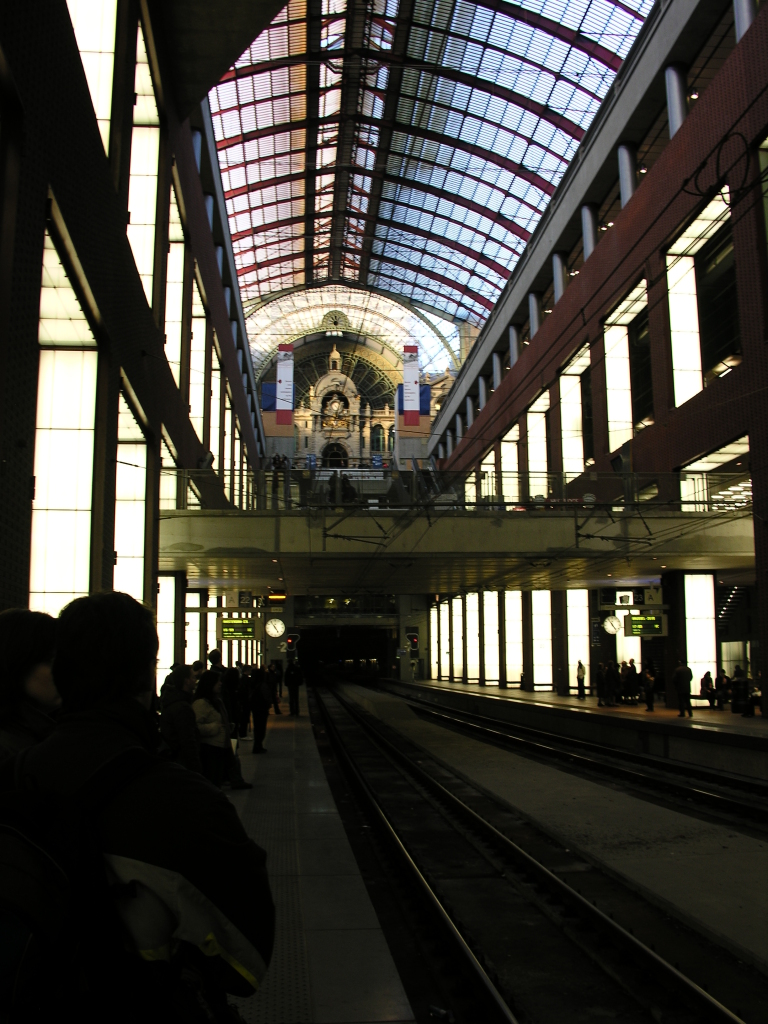
Our first view of the city, outside the station, was this odd pair of cupolas.
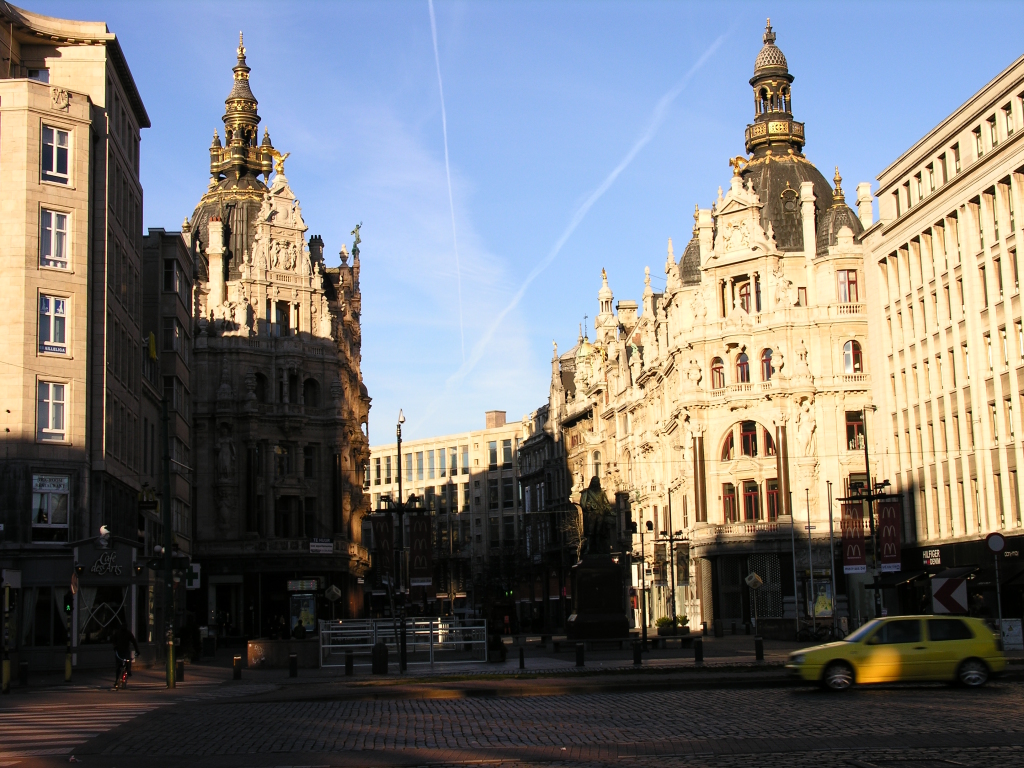
The façade is quite OTT, too.
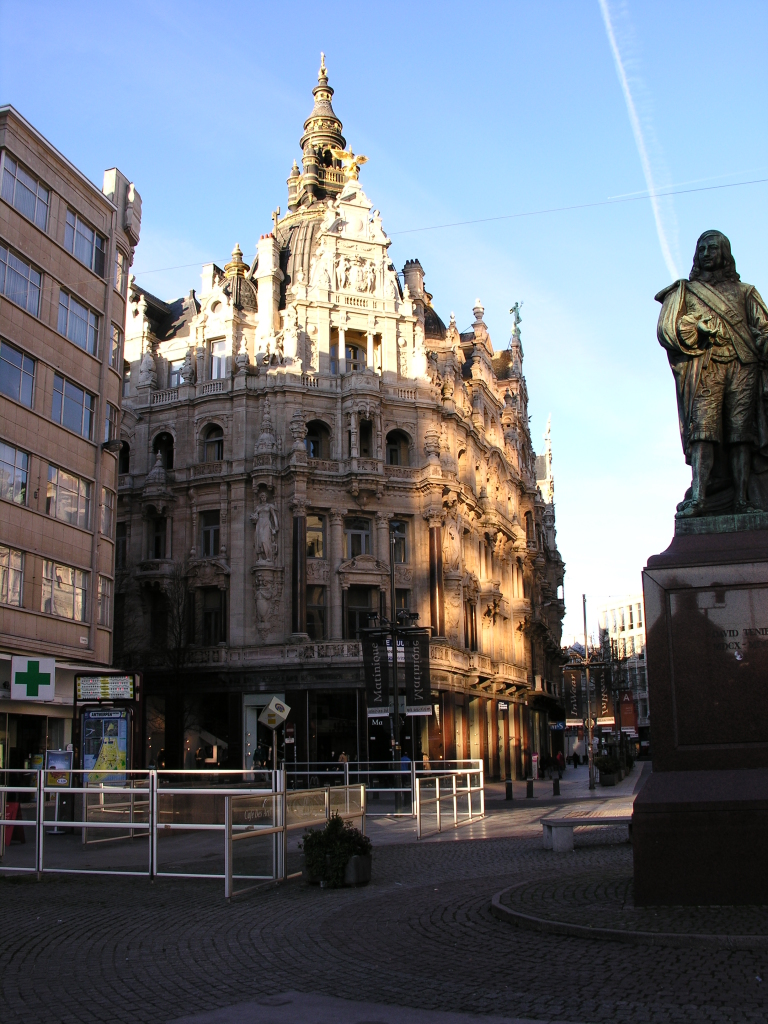
The statue in the foreground is of David Teniers. It is not clear why he in particular has been chosen to greet tourists over other famous Antwerp painters.
Here are some other oddities:
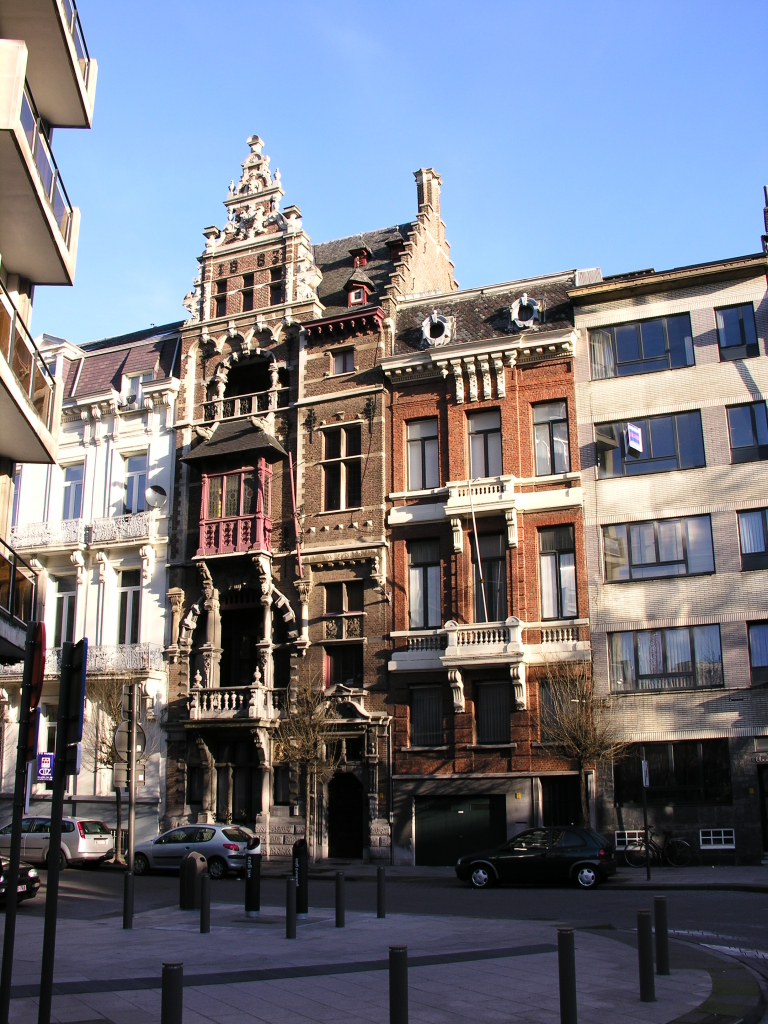
and, near the Fine Art museum
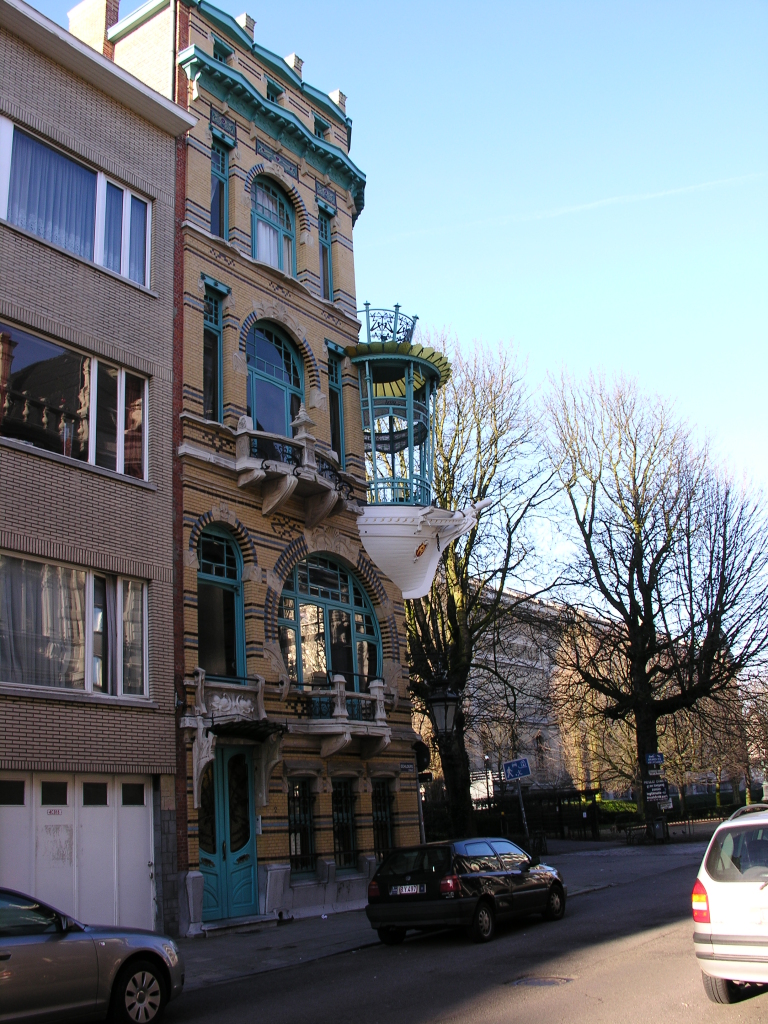
Christine preferred this shot of the same house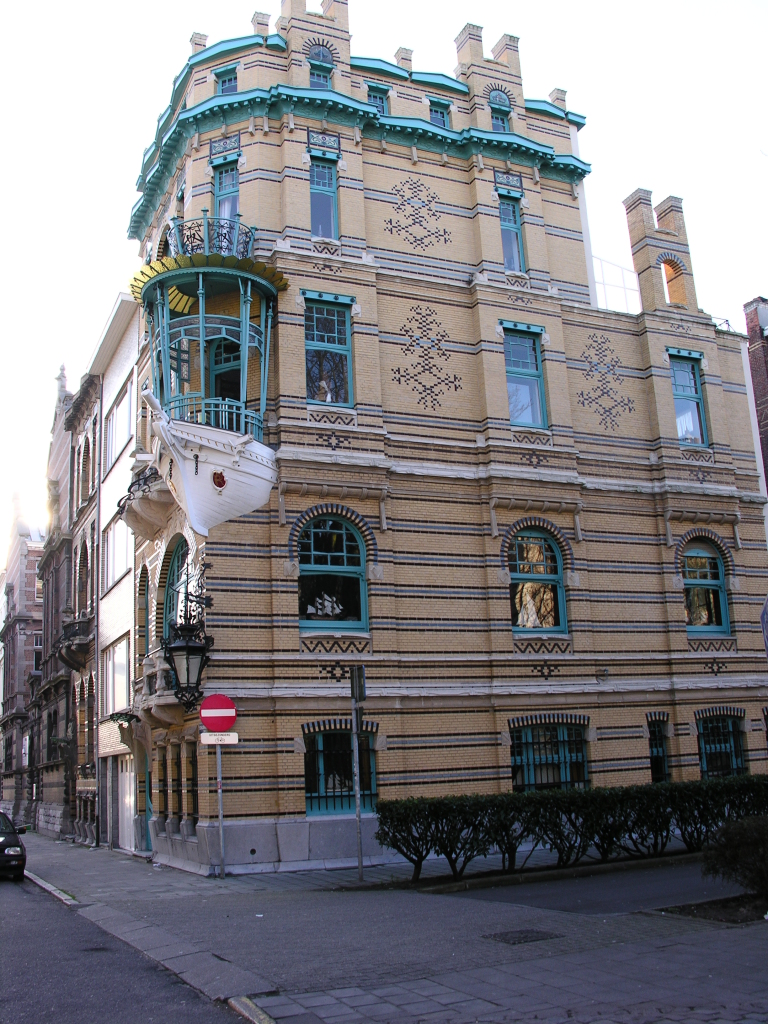
And the oddest shaped (yes, well, what?) of all
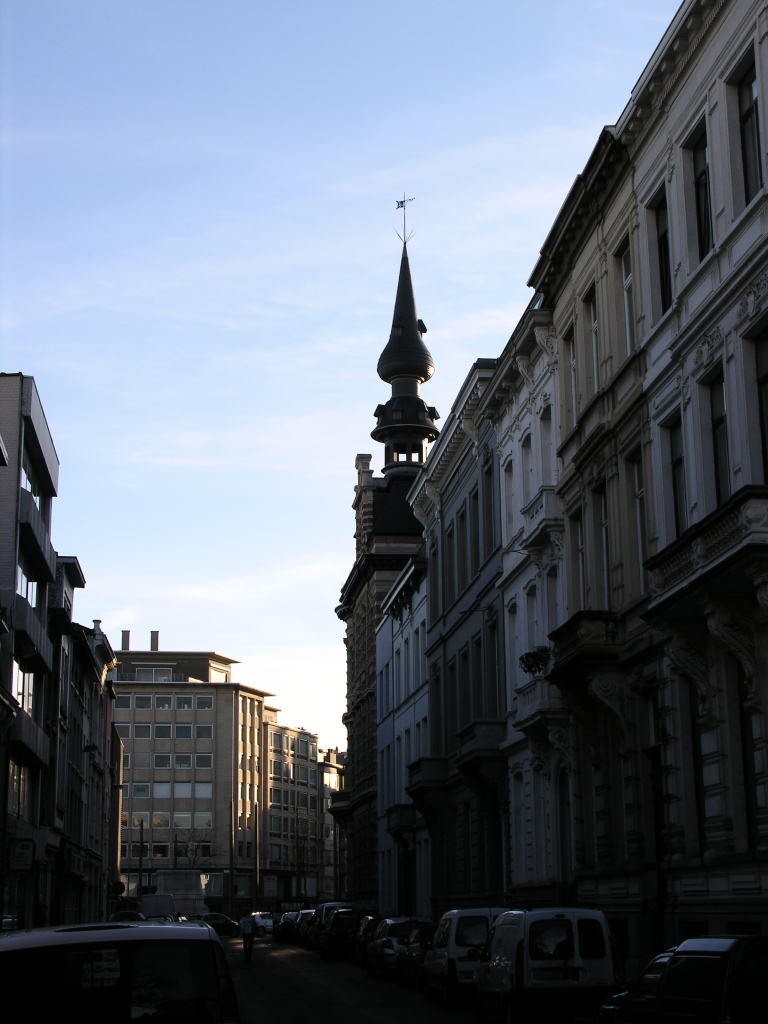
Ancient and modern, side by side, opposite the Fine Art museum. The modern building reminded us of the “Fred and Ginger” building in Prague.
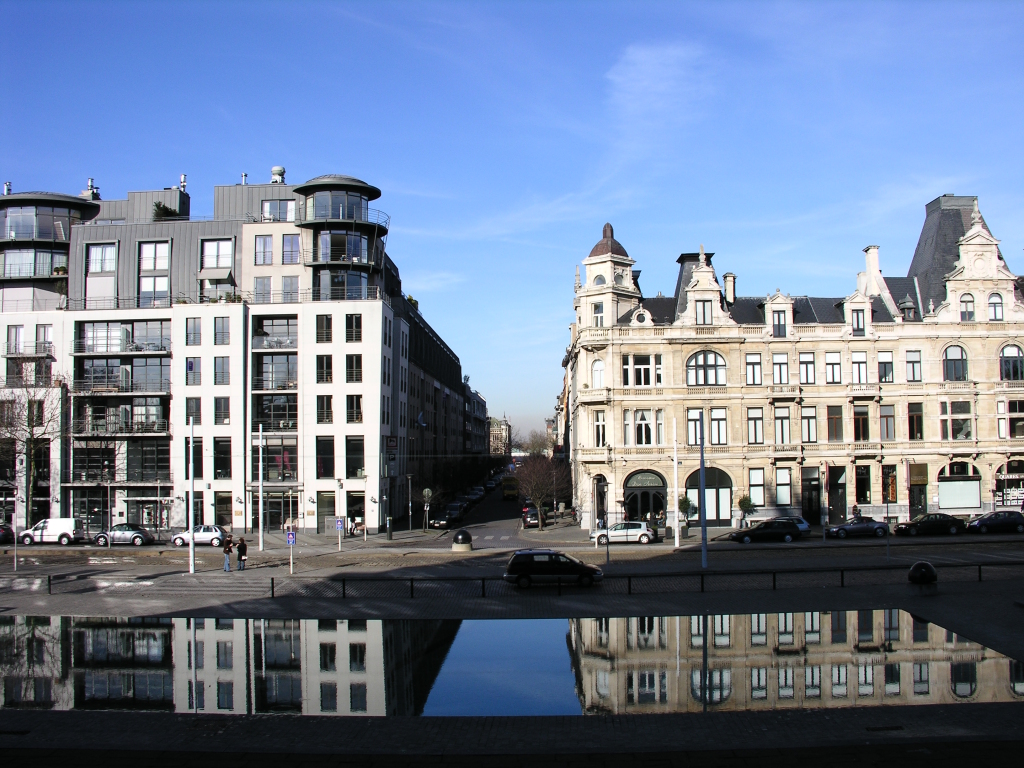
Here is the courtyard of Nicholas Rockox's house – the only part we could photograph,

and
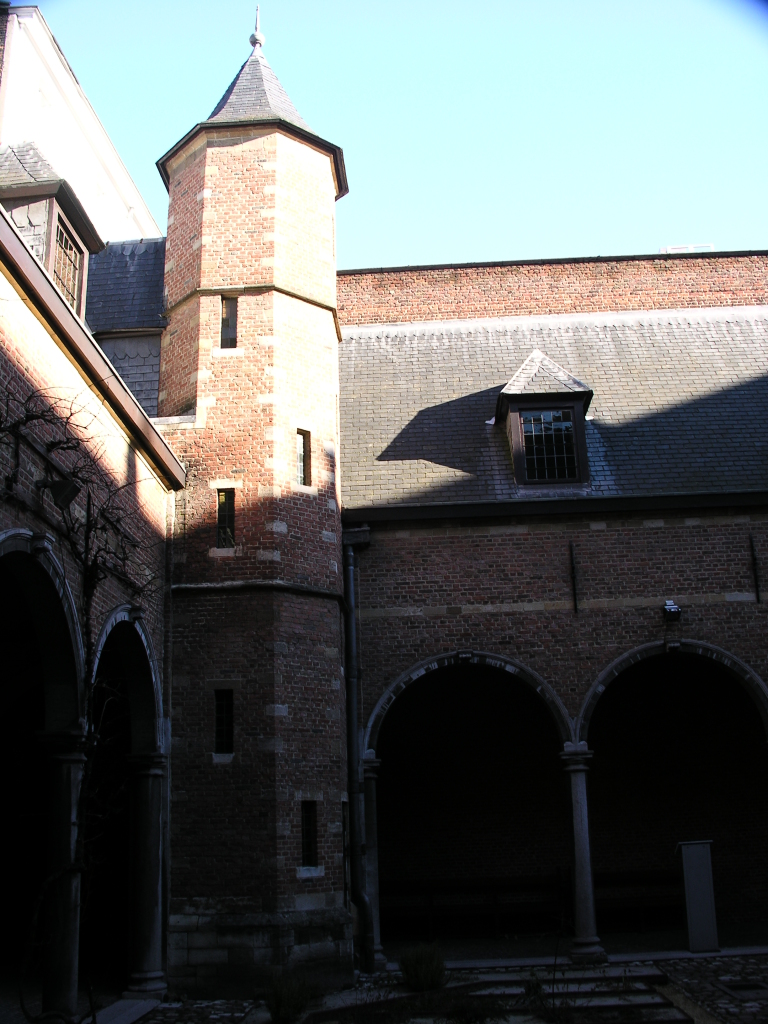
and
here (with the two flags), the very unostentatious façade.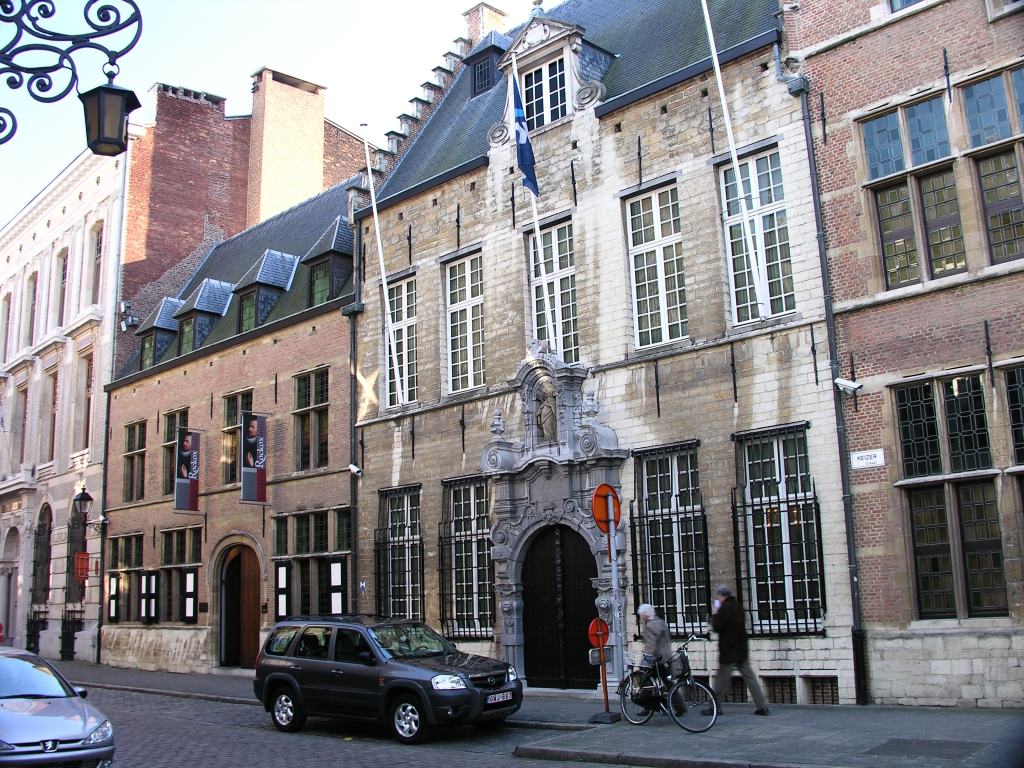
Although our main purpose in coming to Antwerp was to see the mediaeval paintings in the main museum, we had been briefed to visit Rubens' house and to see as many of his paintings as possible. The house is a thing of two parts. The old part, where Rubens lived with his families, is an old fashioned low-countries affair.
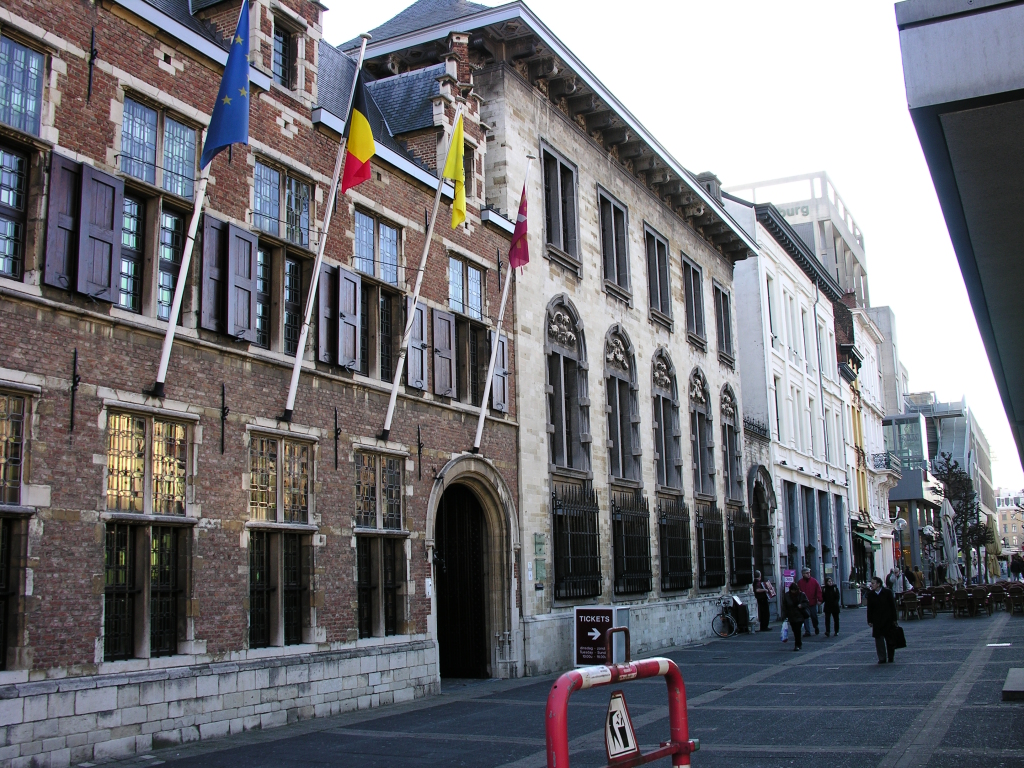
On the right hand side, you can see the new part of the house, which Rubens had build for his workshop. It must have been even more remarkable against the background of so many other brick buildings. Of course, no photographs inside the house. Here the portico leading to the garden.
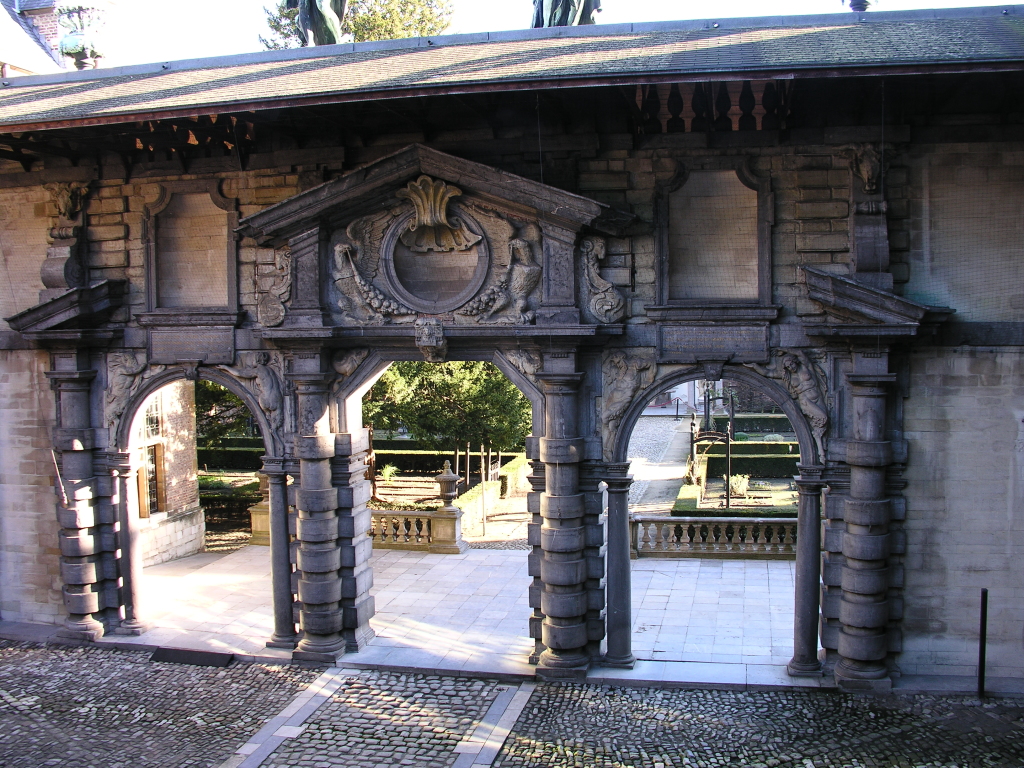
The inner courtyard has two sides that are traditional Dutch
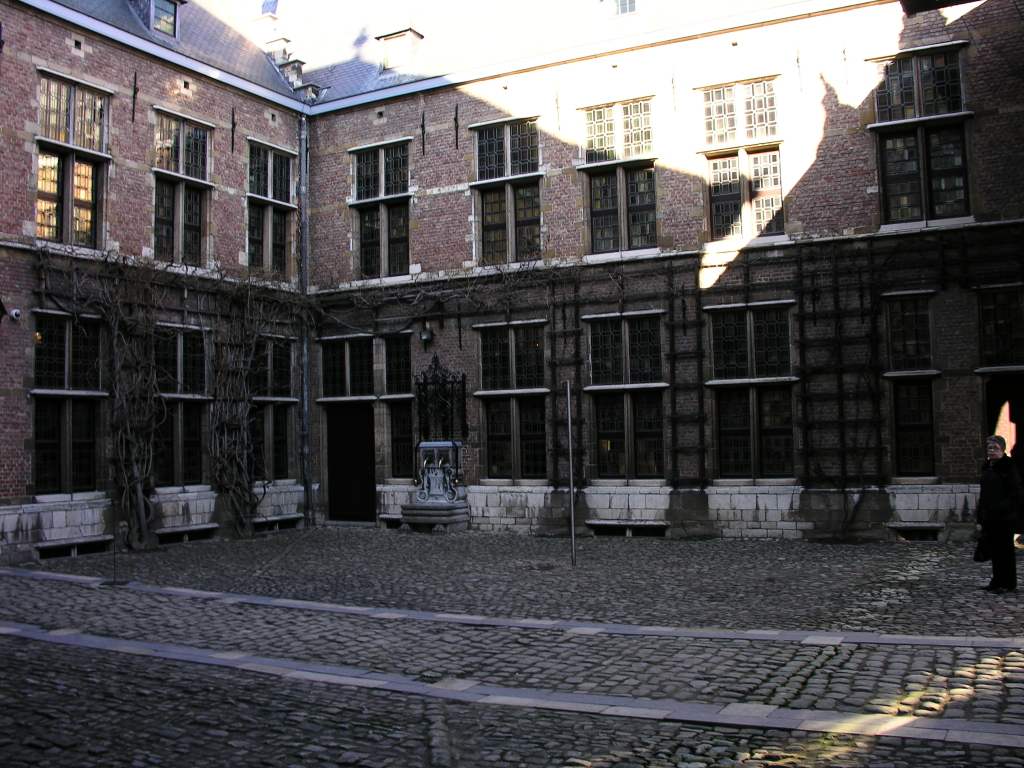
And two that are Italian.
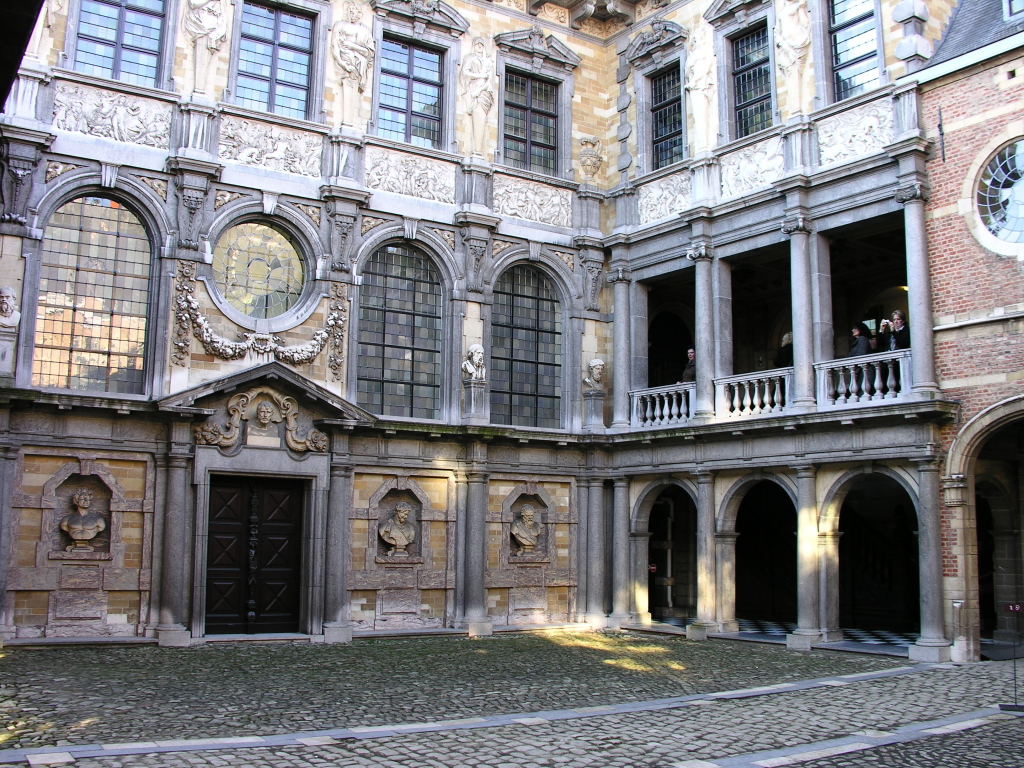
We got lost in the rabbit-warren of streets, so instead of going to Nicholas Rockox's house after Rubens', we ended up finding the cathedral. It does really dominate the Antwerp skyline
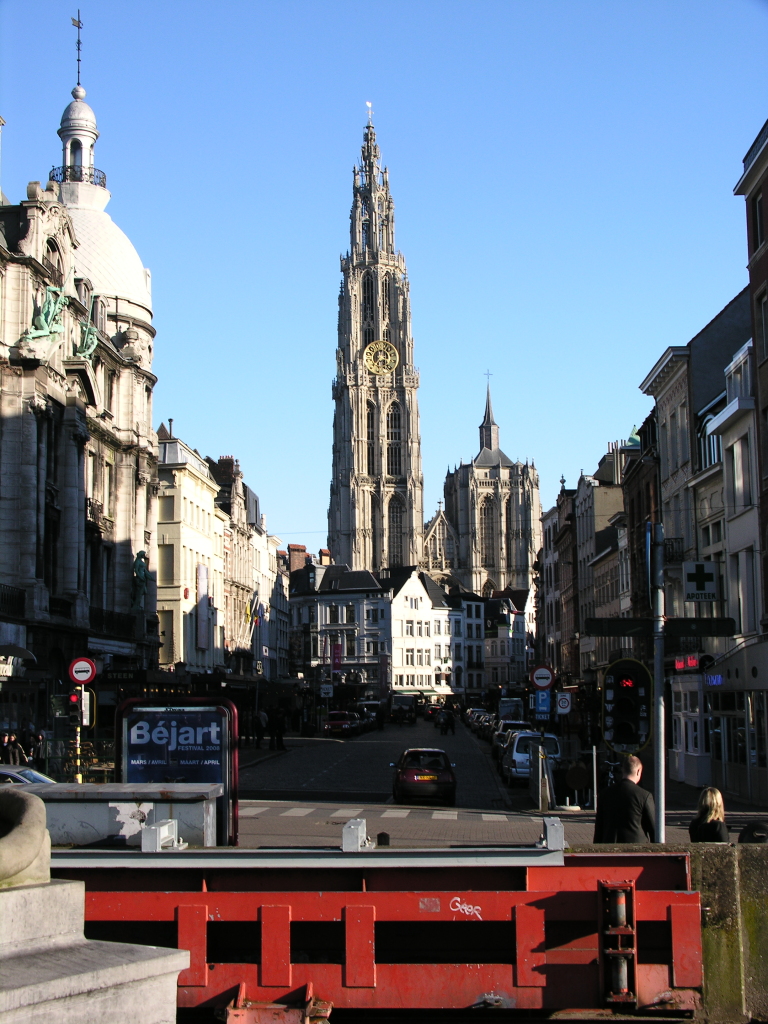
But many of the streets are so narrow you can see only the steeple, or sometimes none of it at all.
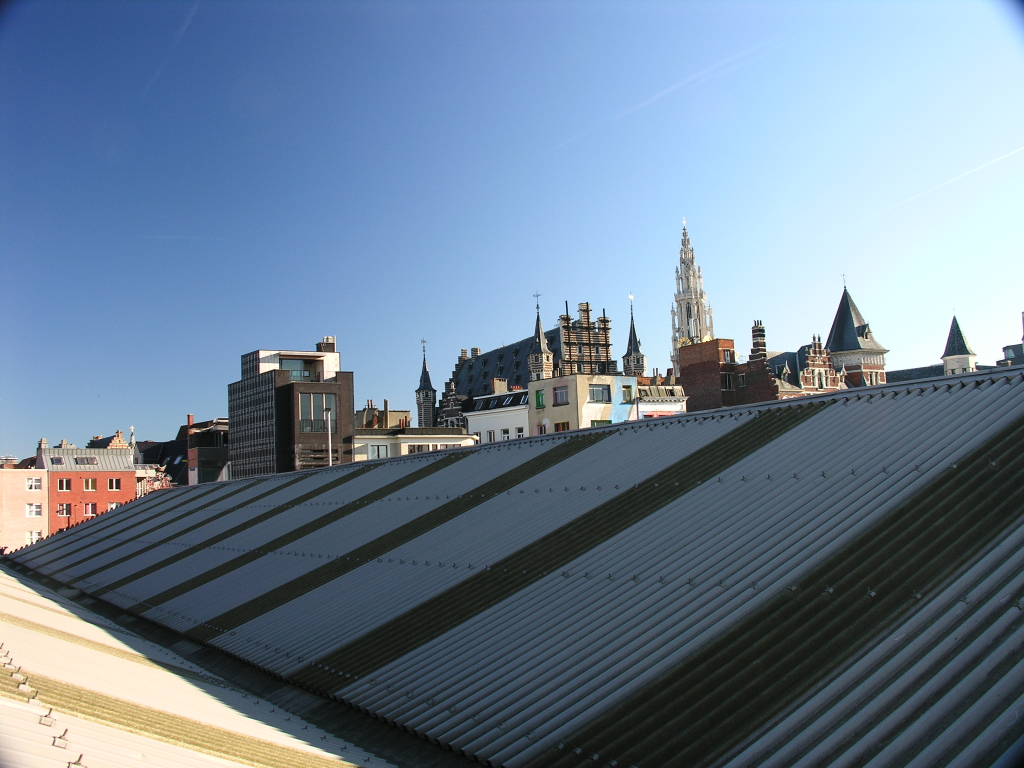
This view I took from the elevated walkway that runs along the Schelde quays, above the passenger terminal. Here you get a reasonably complete view from the side, in the square called Groenplaats.
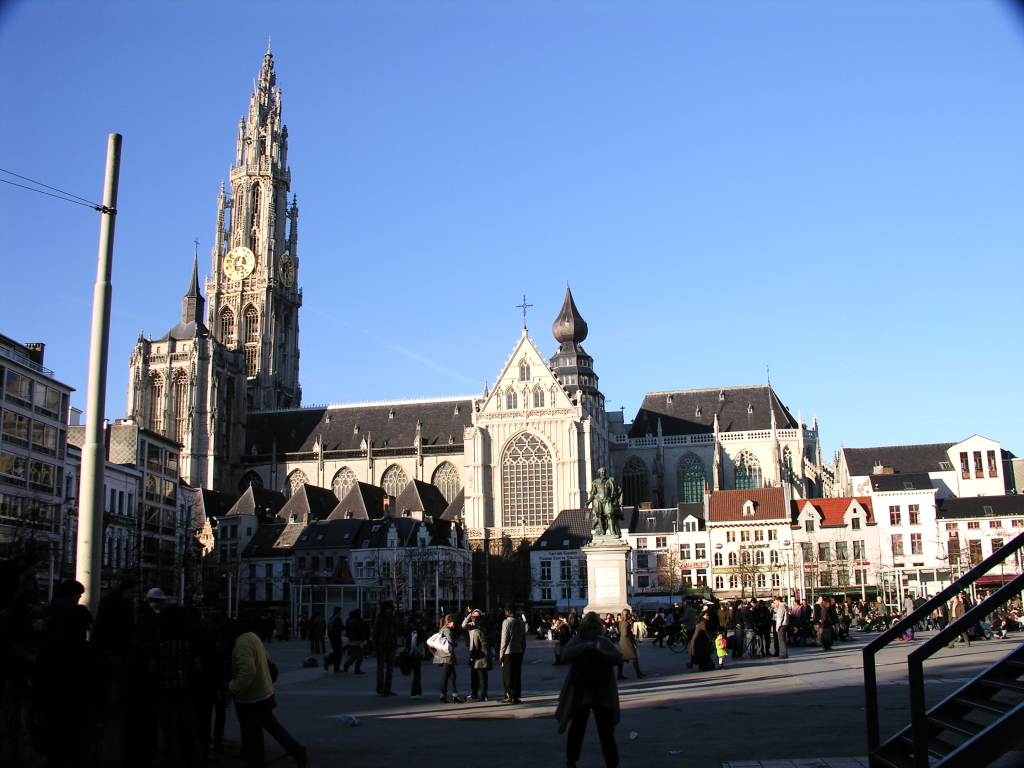
The interior is a mixed bag. We liked the white stone, and even more, the whitewashed surfaces around the choir and high altar.
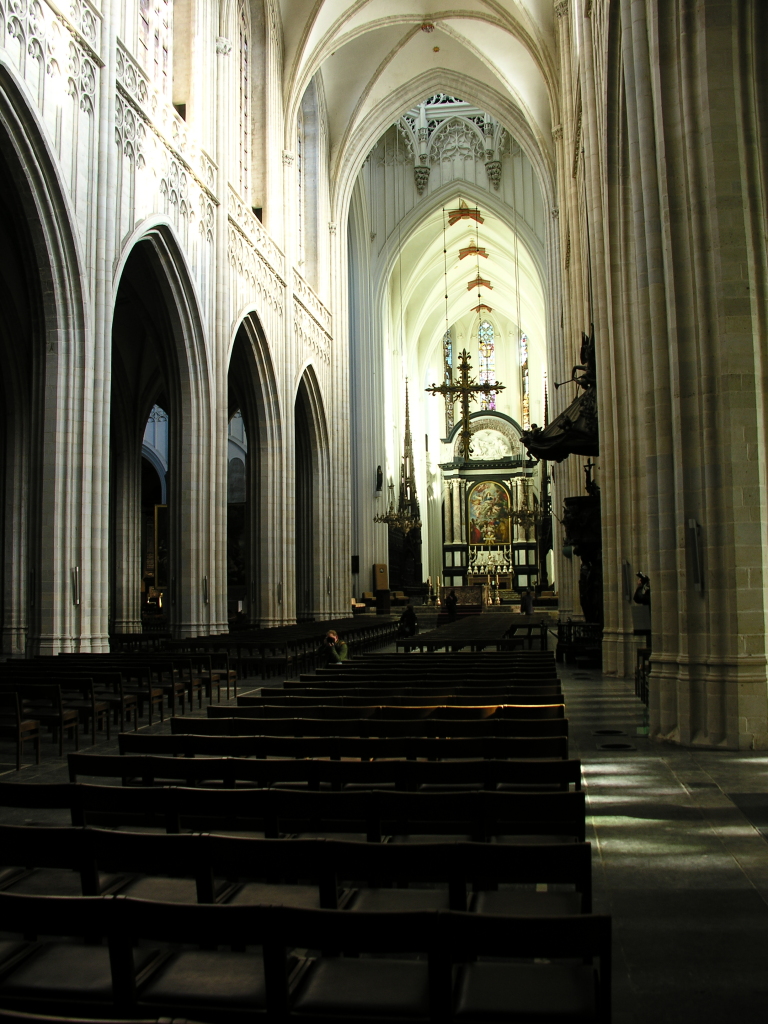
From the high altar, looking back down the choir to the nave:
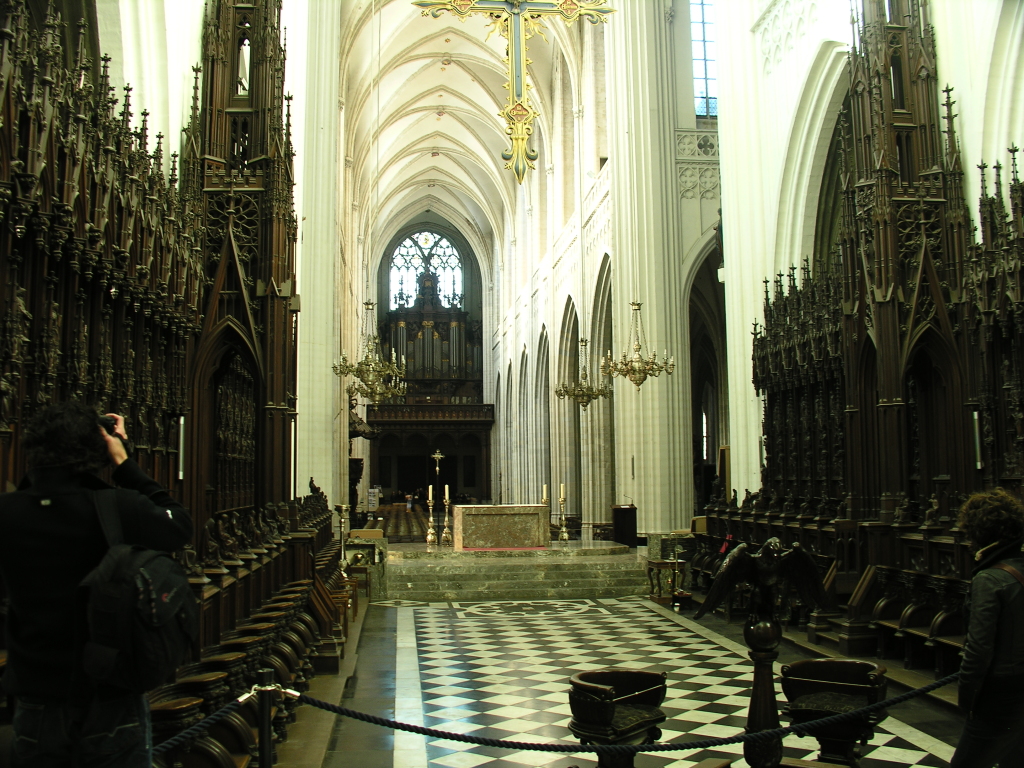
One of the peculiarities (to us) of this cathedral is its width – there are no fewer than 7 aisles
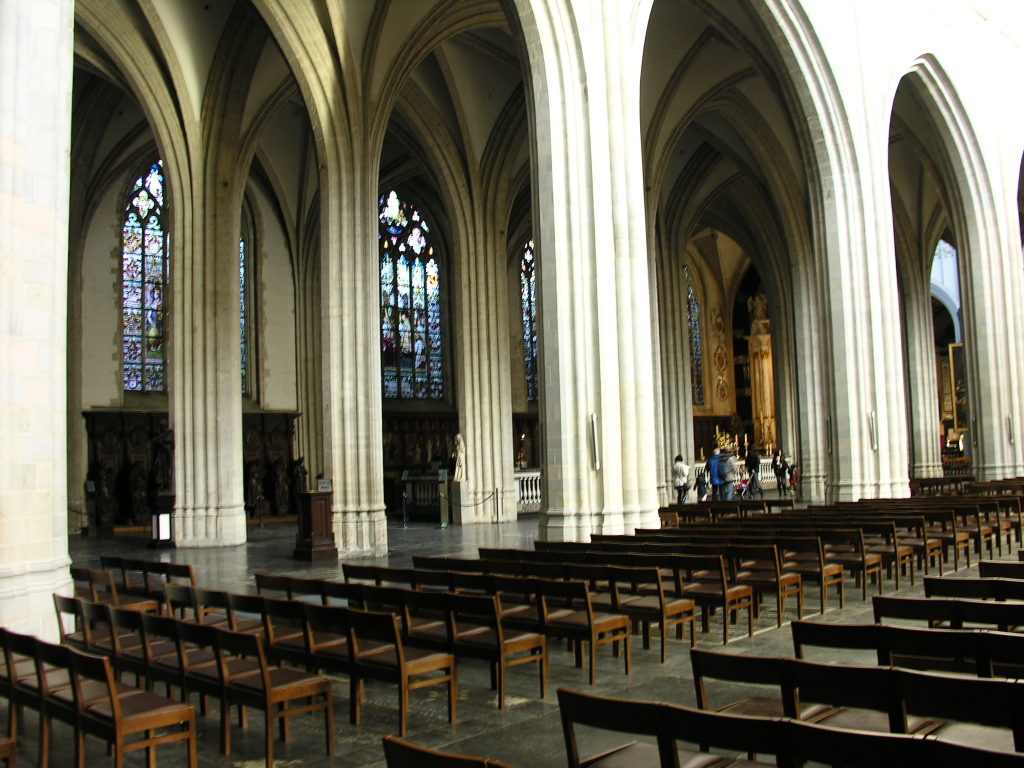
We also liked the stain glass windows.
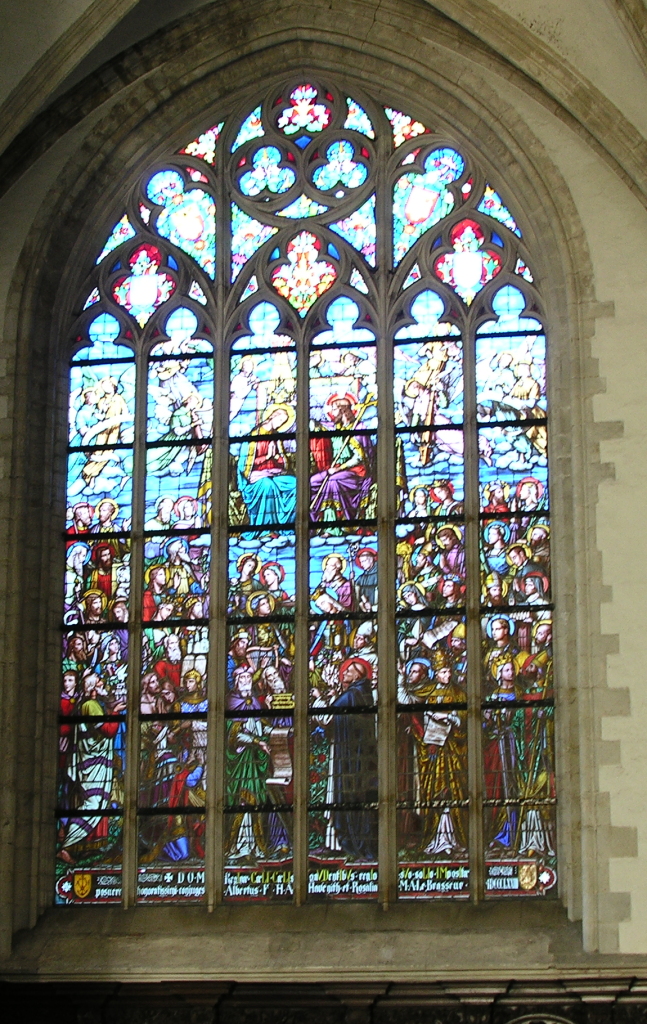
and
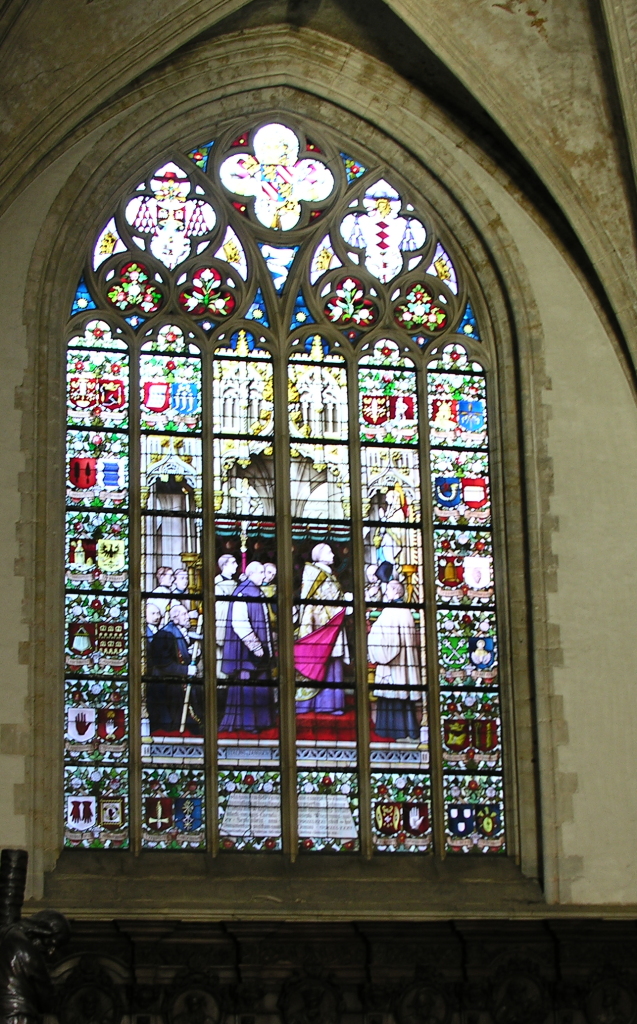
and
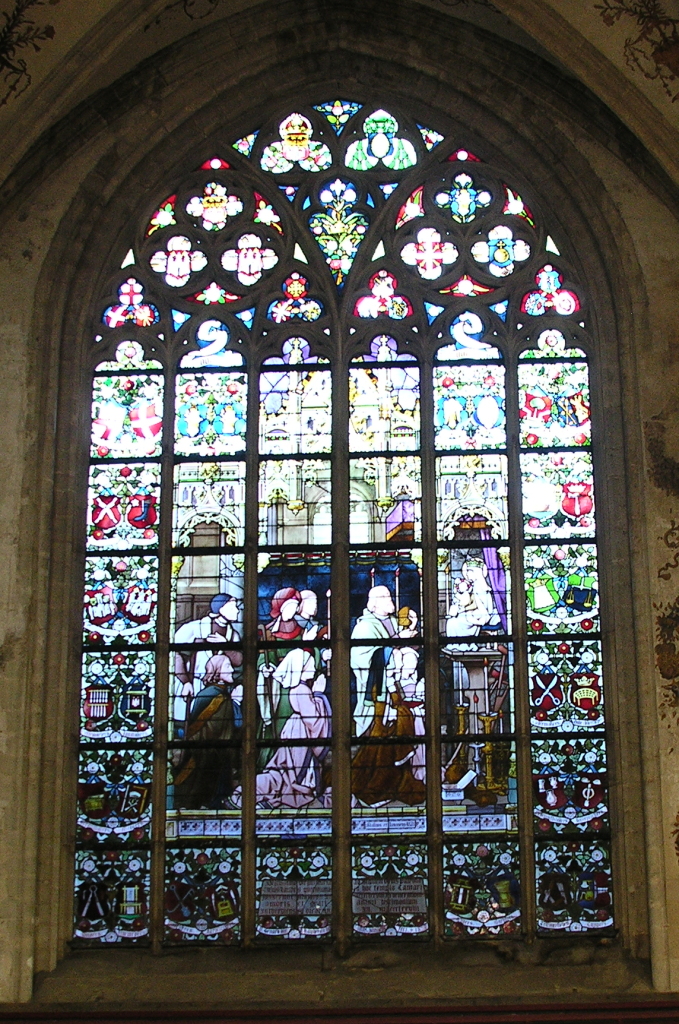
The other treasures in the cathedral are two of the mega Rubens. Only one of them came out on my photos: the erection of the cross.
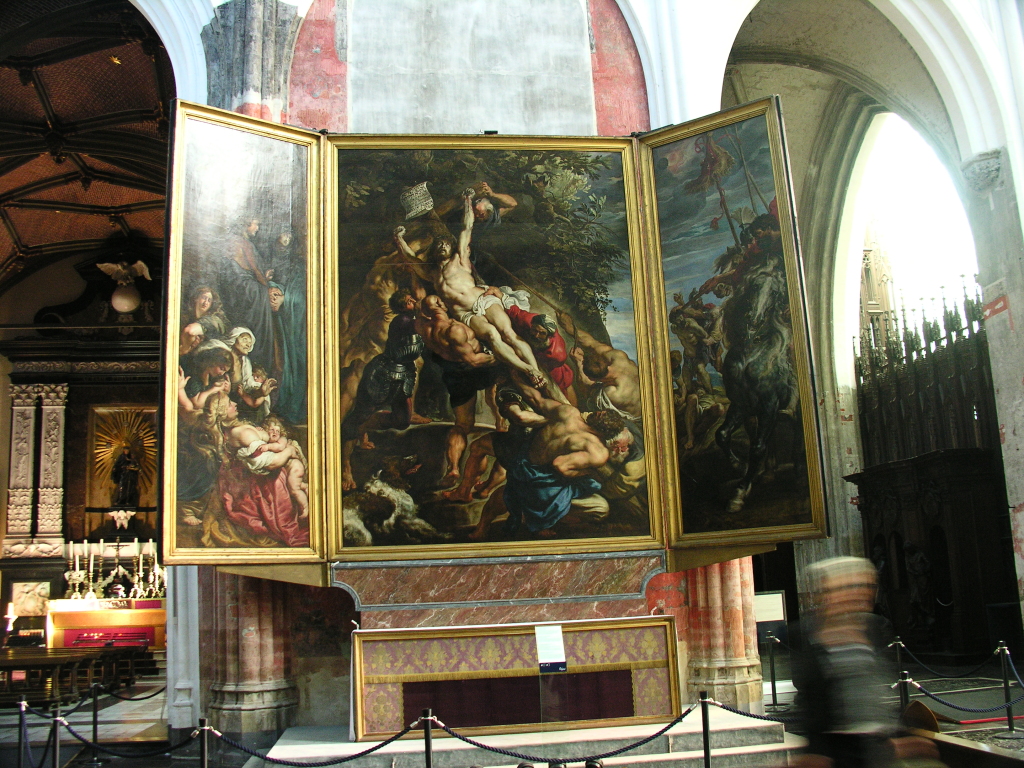
Also a smaller Rubens in one of the side chapels
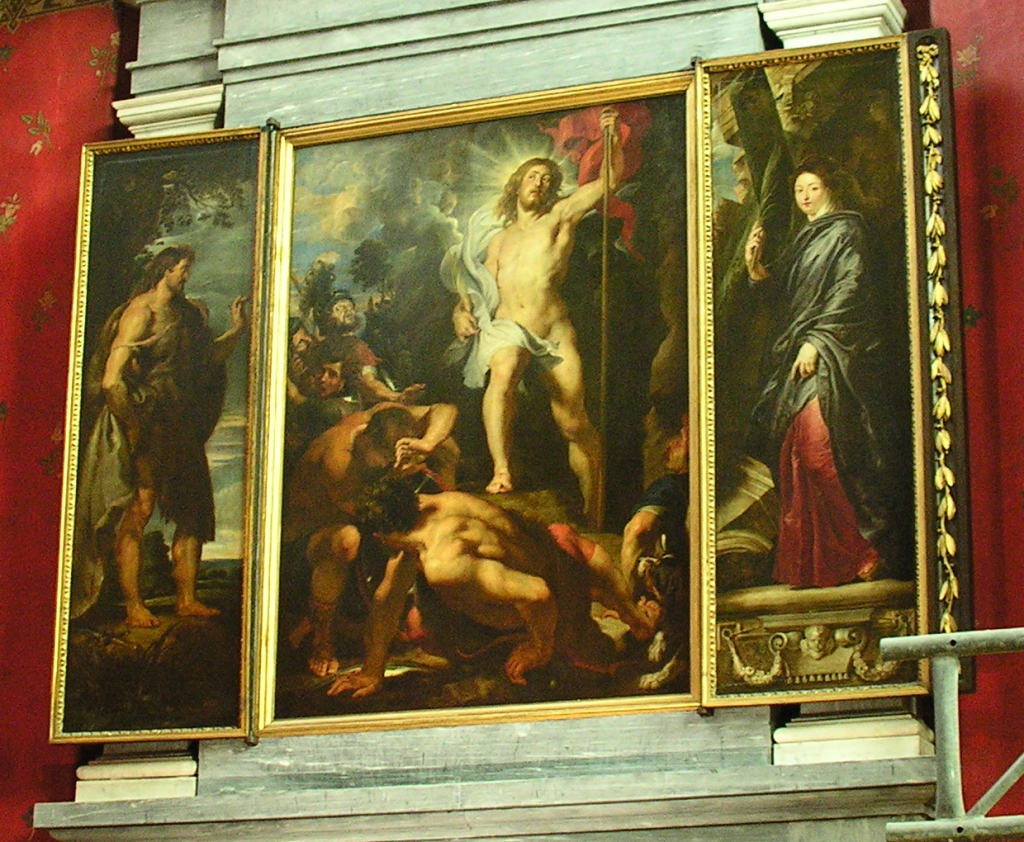
At Piet's recommendation, we also visited the Borromeo church, which was the Jesuits' church in Rubens' time. Molto Molto baroque, but I don't mind that in a facade.
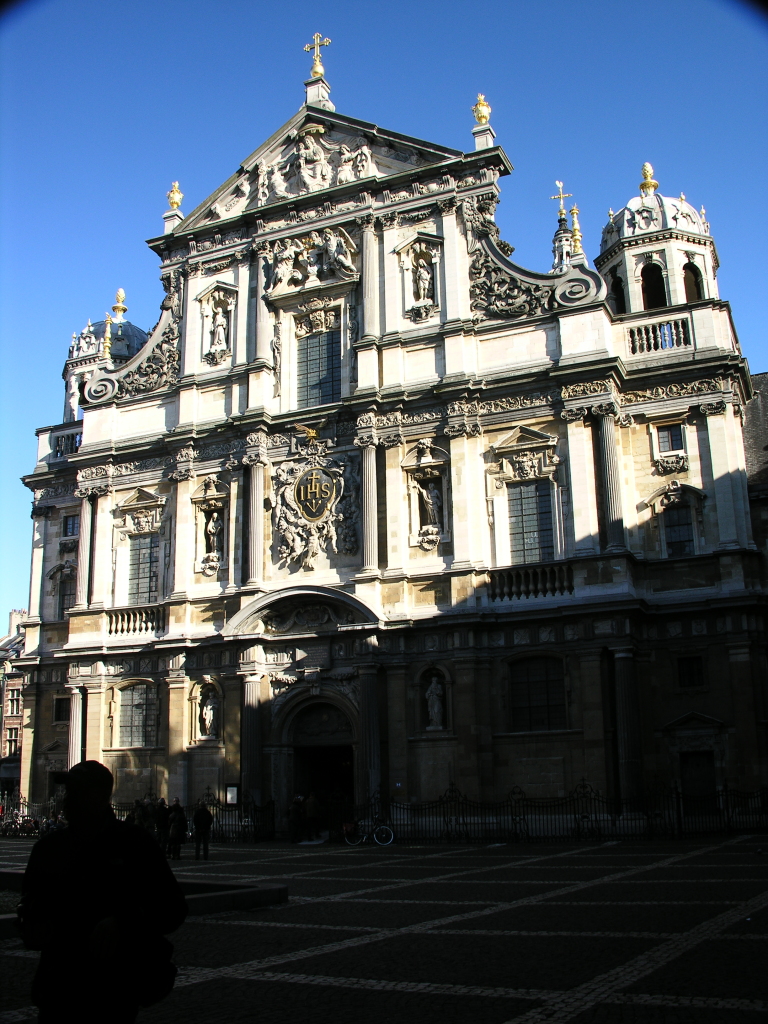
Inside, there is much more light than I have seen in the Italian churches
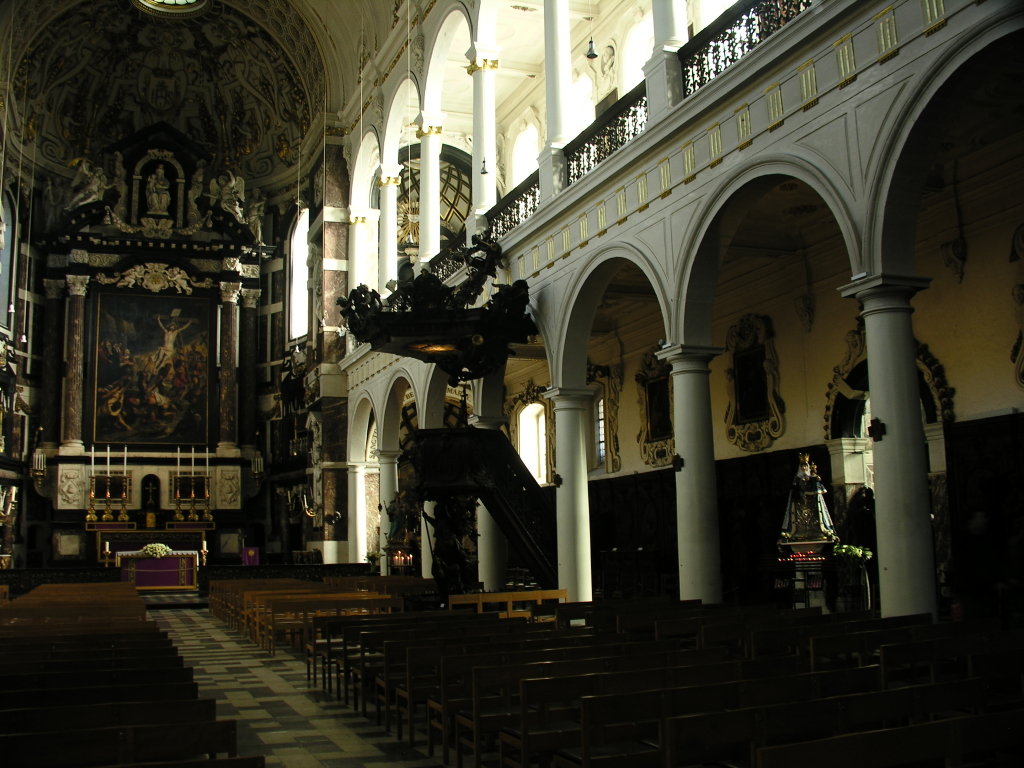
But it is much too ornate for modern tastes.
They're not kidding, it is very big indeed. Here the town hall.
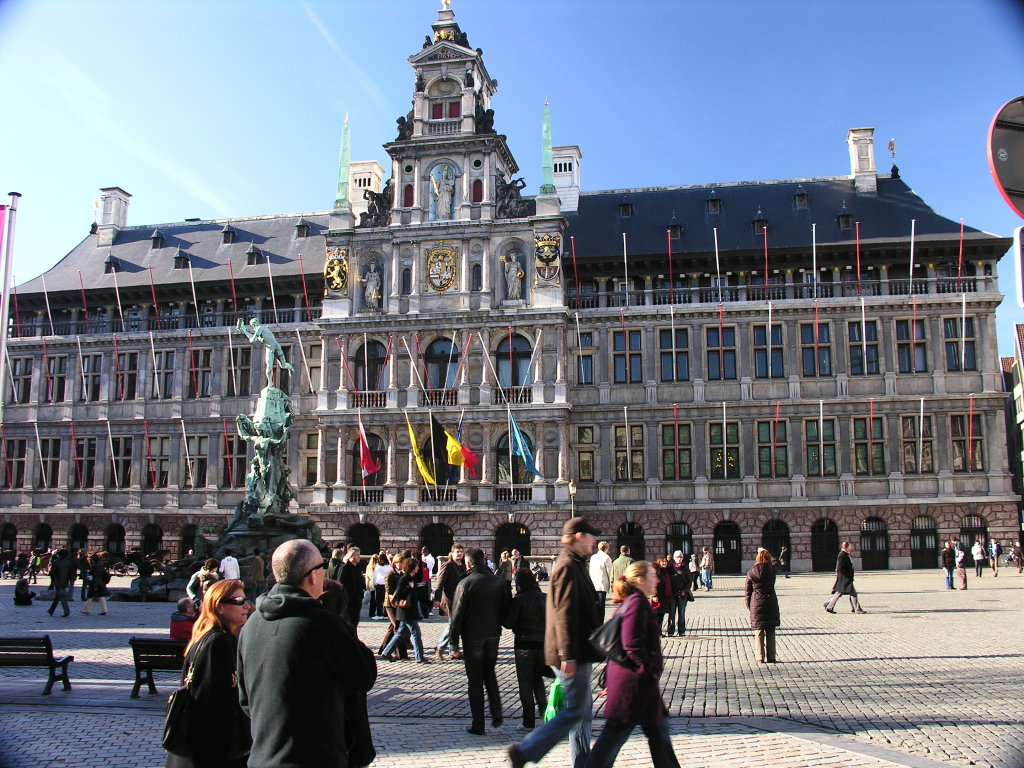
And some rich houses
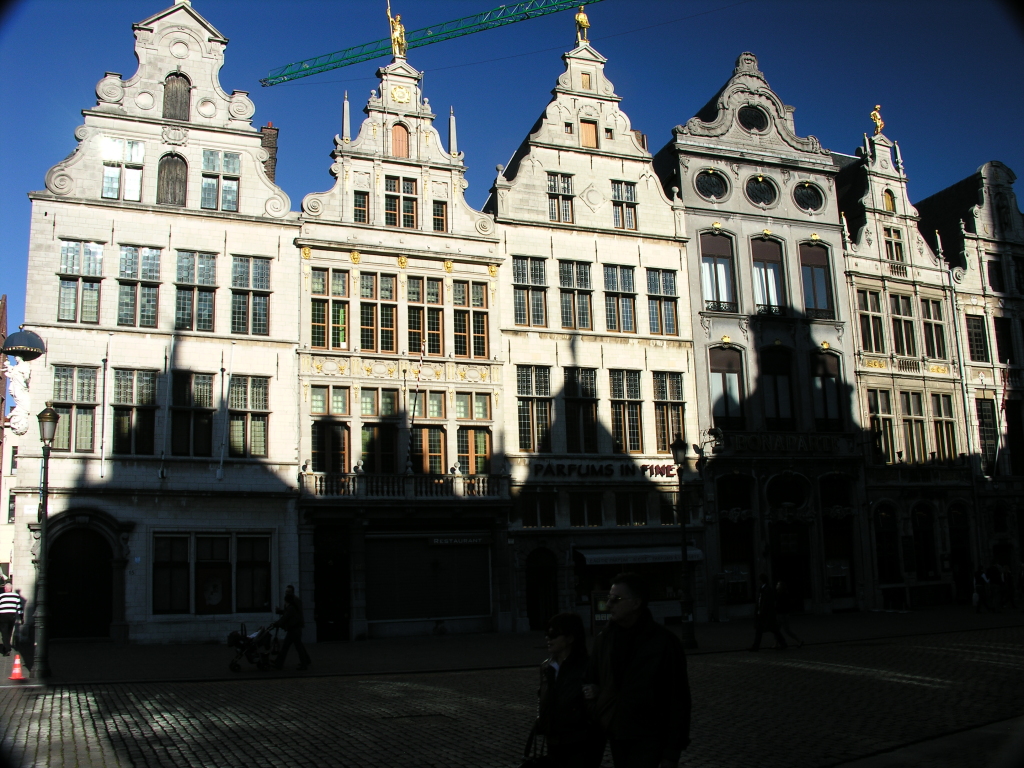
Did I mention we were incredibly lucky with the weather. Walking around in the rain would have been no fun at all. You can see from the strength of the shadows how bright it was – this about 2pm on an early February afternoon.
Here is Christine on the walkway, from which I had hoped to get a skyline of the city.
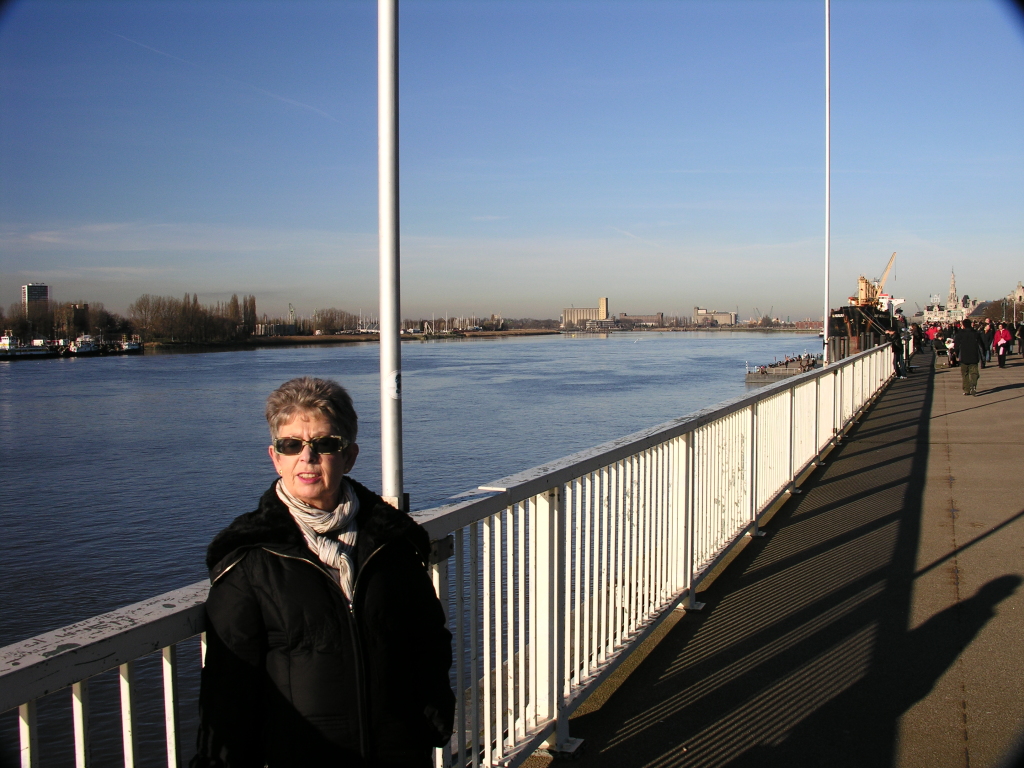
She declined to take the foot tunnel to the other side, so the shot remained untaken. The docks seem to have moved out of the city. Apart from the ship behind Christine's left shoulder – and which gave no sign of having loaded or unloaded where it was moored – there was no shipping in site, and very few cranes.
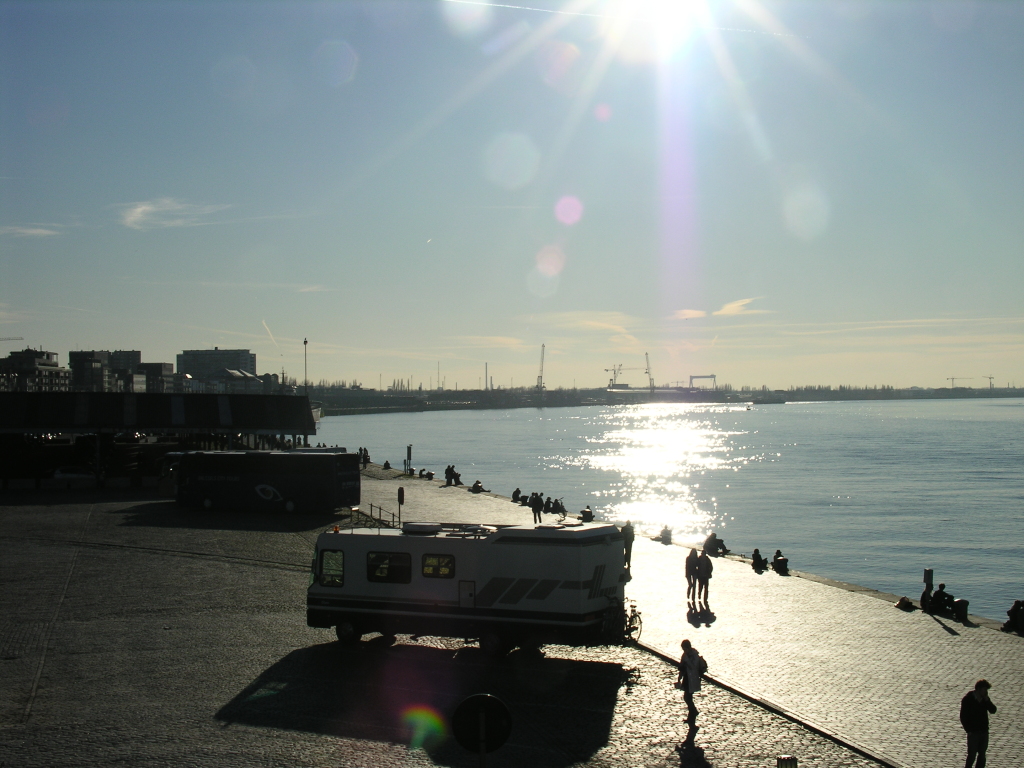
As we came down from the elevated walkway, we passed through the oldest stone building in Antwerp – the Steyn.
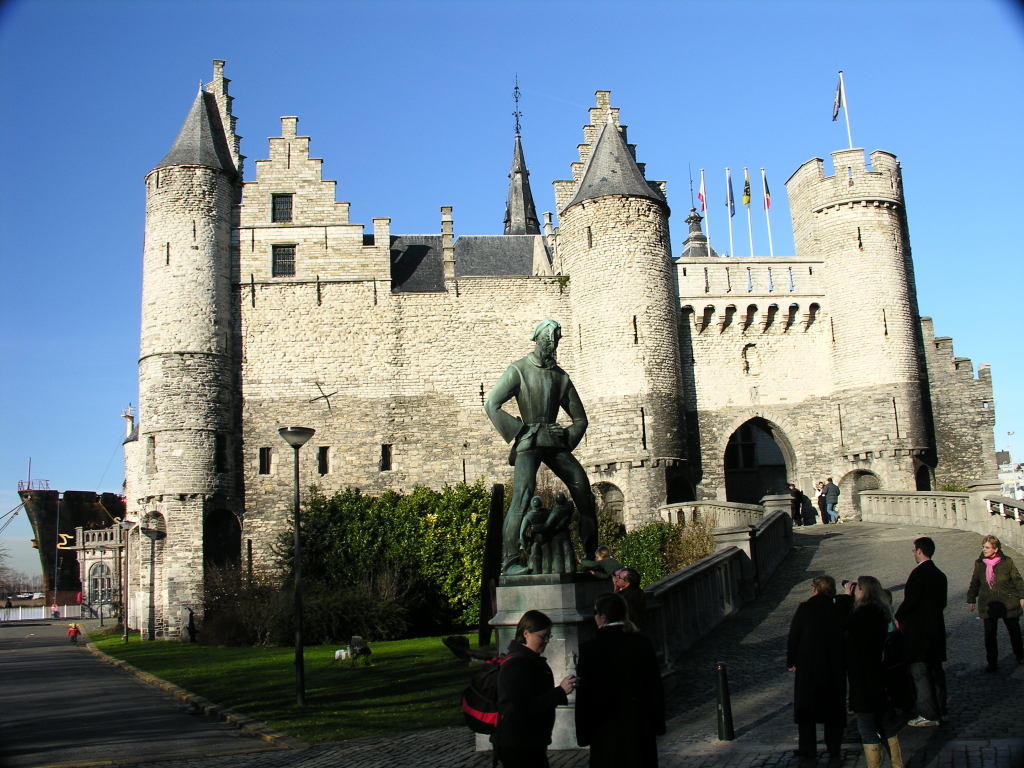
Surely no OG from between (say) 1940 and 1975 could possibly have passed by this street sign without stopping for a giggle.
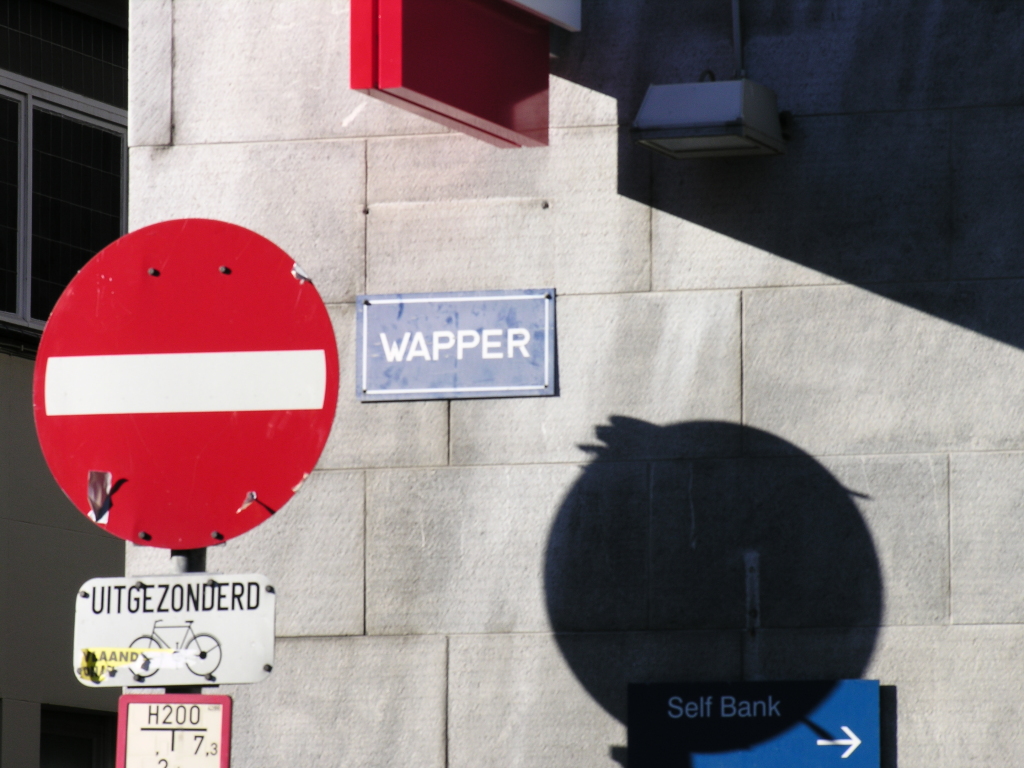
We left plenty of churches unvisited. Some we found were shut, like St Paul's
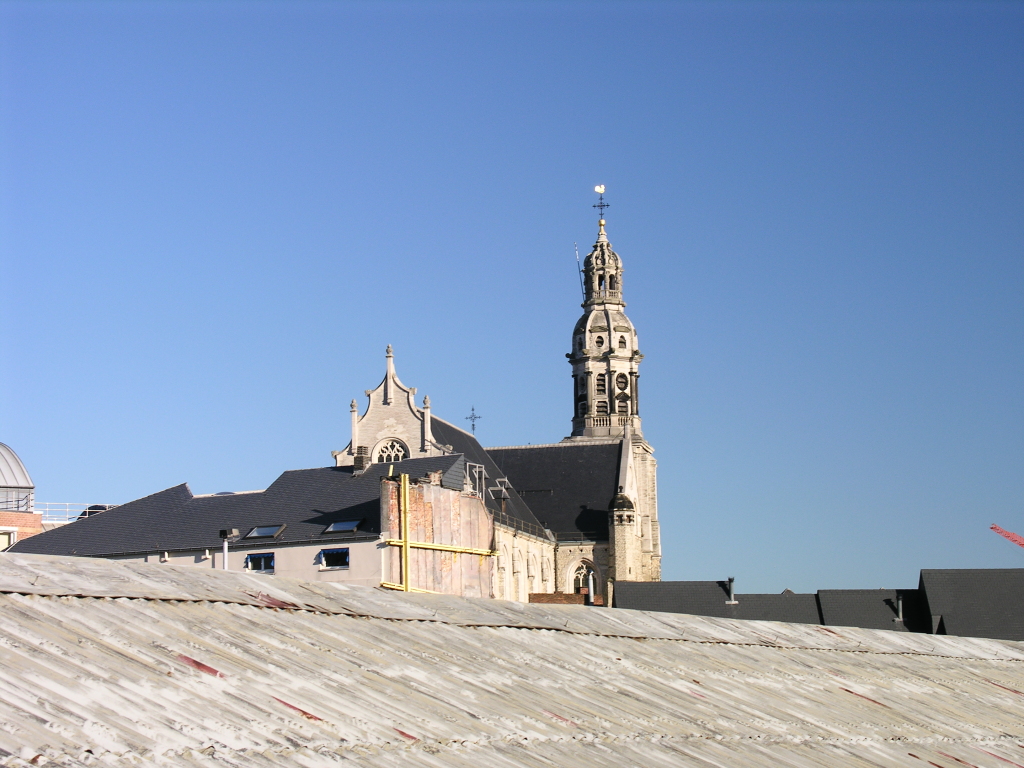
and St Joris
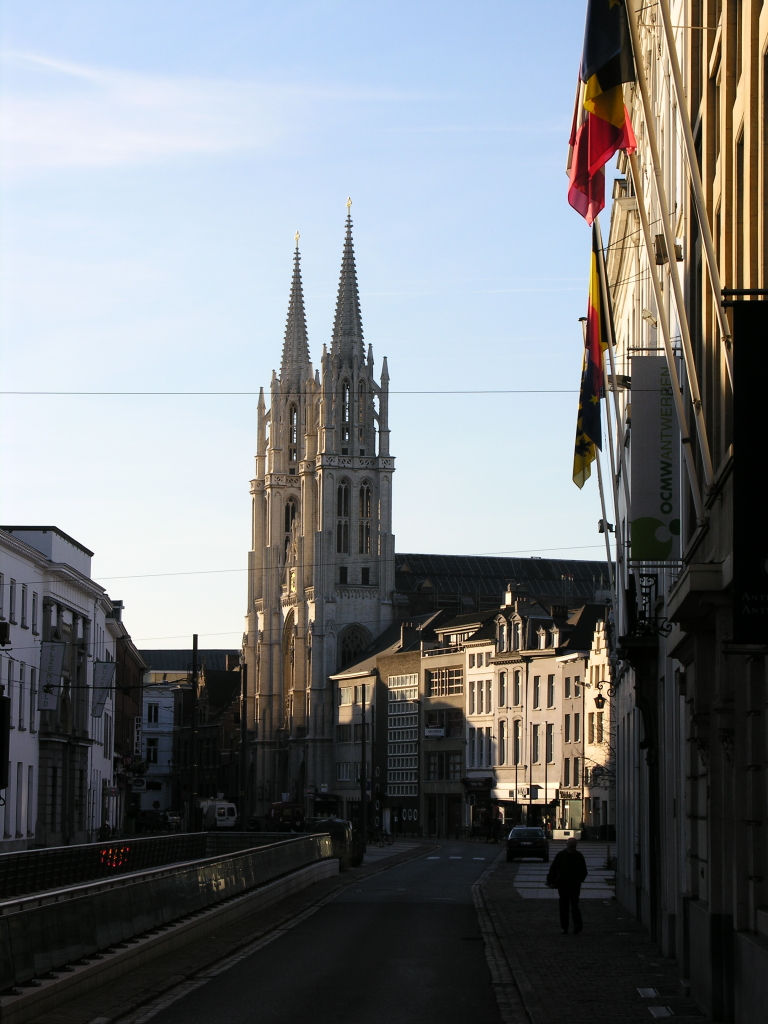
Some we didn't find at all – like St James', where Rubens is buried. We left several museums unvisited, because we ran out of time and steam. Well, actually, steam and time, because of the very big helpings in the restaurants. It was a pity we only had a weekend, except that neither waistline nor wallet could have taken the two days longer we should have needed to see everything.